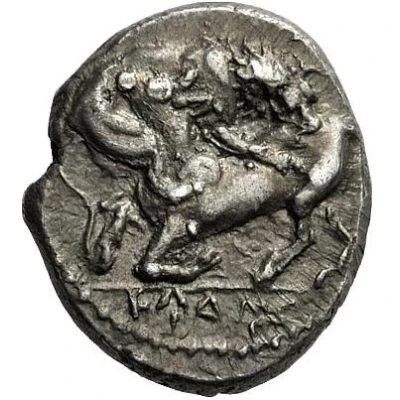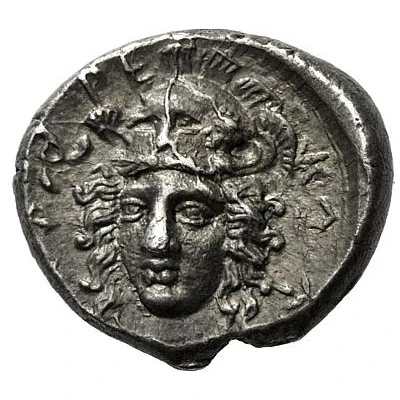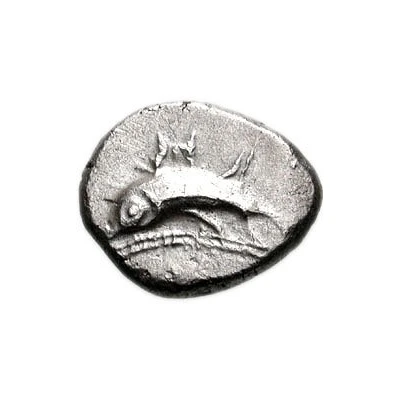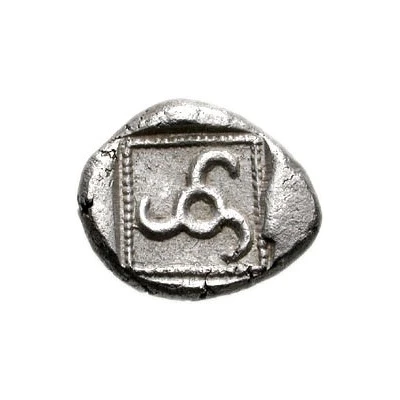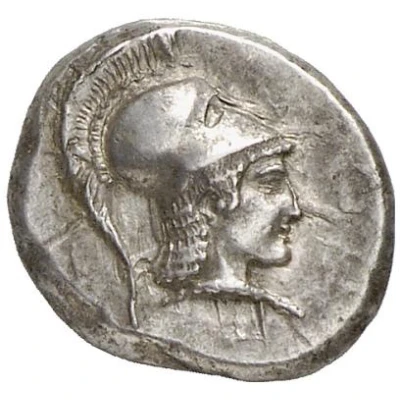
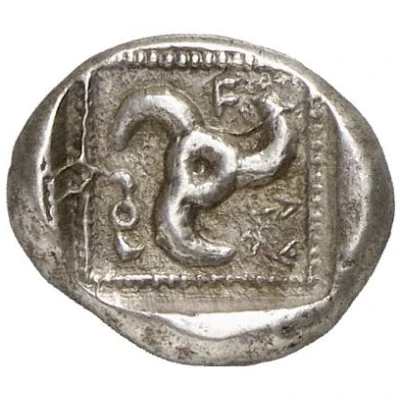

© Nomos AG
Tetrobol - Vekhssere II 410 BC - 380 BC
| Silver | 2.71 g | - |
| Issuer | Dynasts of Lycia (Achaemenid Satrapies) |
|---|---|
| Dynast | Vekhssere II (circa 400-380 BC) |
| Type | Standard circulation coin |
| Years | 410 BC - 380 BC |
| Value | Tetrobol (⅔) |
| Currency | Drachm |
| Composition | Silver |
| Weight | 2.71 g |
| Shape | Round (irregular) |
| Technique | Hammered, Incuse |
| Demonetized | Yes |
| Updated | 2024-10-10 |
| Numista | N#178649 |
|---|---|
| Rarity index | 100% |
Reverse
Triskeles to left, name of ruler surrounding, vertical diskeles on lower left
All within dotted square border in incuse square
Script: Lycian
Lettering: F 𐊁 𐊜 (SS)
Unabridged legend:
F E X (pronounced Wex)
Debatable: diskeles may have been used as "double S"
Translation: Vekhssere II
Comment
Lycian was an interesting early language, sharing some characters with and ultimately yielding to Ancient Greek in the first century BC.See the conversion chart, here:
https://en.wikipedia.org/wiki/Lycian_language
Interesting fact
One interesting fact about the Tetrobol - Vekhssere II coin is that it features a unique blend of Lycian and Persian design elements. The obverse side of the coin depicts a bearded king facing left, wearing a Persian-style crown, while the reverse side shows a seated figure of the Lycian goddess, Trigarta, holding a scepter and a small lion. This fusion of styles reflects the cultural exchange and influence that occurred during the Achaemenid Empire's rule over Lycia.
